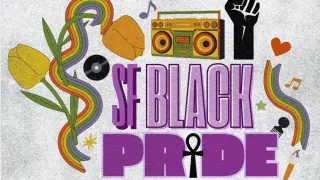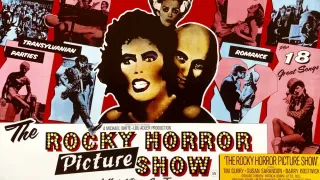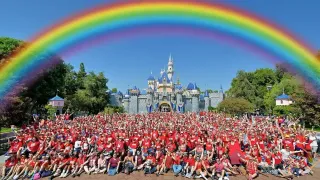
Aug 20
Queer the Ballet: Challenging Gender Norms and Expanding Representation in the Dance World
READ TIME: 3 MIN.
Classical ballet, with its centuries-old traditions and strictly defined gender roles, has long been perceived as one of the most conservative corners of the performing arts. Historically, the ballet stage has been dominated by rigid expectations of femininity and masculinity, with limited space for those who exist outside the binary. For queer dancers, and especially for queer women, transgender, and nonbinary people, the path to authenticity in ballet has been fraught with challenges and isolation .
Adriana Pierce, a dancer and choreographer, knows these challenges intimately. As a young artist, she describes living as “two separate selves”: the disciplined ballet dancer in rehearsal and a queer woman exploring her identity outside the studio. “I regret how I felt in ballet spaces during that time, because I had to leave so much of the best parts of me outside. I don't think ballet got the best parts of me, and that's a shame,” Pierce says .
Pierce founded Queer the Ballet in response to her experience of fragmentation, with a mission to foster community, visibility, and belonging for LGBTQ+ dancers. The initiative’s vision is to “broaden the scope of classical ballet to authentically include LGBTQ+ voices and narratives,” with a focus on queer cis women, transgender people of all genders, and nonbinary dancers . By developing works by queer artists and providing support, Queer the Ballet seeks to challenge the traditional partnering and choreography seen on ballet stages.
In June, the company prepared “Dream of a Common Language,” a new ballet directed by Pierce and inspired by the poetry of Adrienne Rich, a monumental lesbian feminist voice of the 1970s. The performance, featuring a troupe of queer dancers, explores themes of identity, community, and belonging—echoing Rich’s own search for connection and authenticity. For many involved, it marks the first time they have been able to bring their full selves to the ballet stage .
While the ballet world has seen increasing numbers of openly queer men, there is still a “profound lack of openly queer female ballet dancers, especially in leading companies,” according to dance scholars and advocates . Many queer women and nonbinary dancers report feeling isolated, often unsure whether there is space for them in the ballet community. The lack of visible role models makes it harder for young queer dancers to imagine futures for themselves on stage.
Pierce notes that the ballet world “likes to put people in boxes, and gender is a very specific box that ballet likes to define.” The traditional structure of ballet—where men lift and women are lifted, and where costumes and choreography reinforce binary gender roles—has historically excluded those who do not conform .
This reality is slowly beginning to shift. Initiatives like Queer the Ballet, along with other projects such as Katy Pyle’s Ballez—an LGBTQ+ ballet company that reimagines canonical works—are expanding what is possible. These performances challenge the notion that duets must always be between a man and a woman, and instead celebrate partnerships that reflect the diversity of real relationships and identities .
Queer the Ballet’s outreach extends beyond the stage. The organization invests in education, workshops, and social media engagement, aiming to make dance more accessible and relevant to LGBTQ+ youth. Assistant Director Minnie Lane, a prominent dancer and social media creator, uses platforms like TikTok and Twitter to foster dialogue about issues in the ballet field and to amplify the voices of queer and gender-diverse dancers .
For queer dancers and audiences alike, these changes represent more than aesthetic innovation; they are steps toward genuine inclusion. “There is something inherently queer about dance, something that nineteenth-century ballerinas such as Eugénie Fiocre knew way before we did,” writes dance scholar Sofía Ruvira-Fernández . As more dancers and choreographers refuse to leave parts of themselves at the studio door, they are claiming space not just for themselves, but for future generations.
The journey toward a fully inclusive ballet is ongoing. But with each new performance, Queer the Ballet and its allies are transforming ballet from the inside out—inviting everyone, regardless of gender or sexuality, to take center stage.






